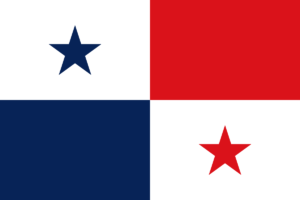History of Panama:
Panama was originally inhabited by the Cocuru and Cuevas tribes. The first European to visit Panama was Rodrigo de Bastida in 1501. A year later he arrived with Christopher Columbus and founded the city of Darien.
In 1513, Vasco de Balboa made his famous journey from the Atlantic Ocean across the Isthmus of Panama to the Pacific Ocean. The voyage proved possible across Panama, making Panama an important trading center. Over the years, silver and gold were shipped from other parts of the New World and loaded onto ships bound for Spain via Panama. The journey through Panama was called the “Camino de Cruces” or “Way of the Cross” because the journey was dangerous and many people died along the way.
For nearly 300 years, Panama was a colony of the Spanish Empire. In 1821 Panama left the Spanish Empire and became part of Colombia. Panama has tried and failed to secede from Colombia for many years. In 1903 Panama finally declared independence and signed a treaty with the United States. The treaty provided that the United States had the right to an area 16 miles wide and 50 miles long to build a canal across Panama. In 1914, the United States completed the Panama Canal. In 1999 the canal passed into the hands of the Panamanian government.
Information about Panama:
| Capital | Panama |
| Population | 4,476,398 (Source: 2023 worldometer) |
| Major Cities | PANAMA CITY (capital) |
| Borders | Costa Rica to the west, Colombia to the southeast, the Caribbean Sea to the north, and the Pacific Ocean to the south |
| Gross Domestic Product (GDP) | $76,522,511,781 (2022 worldometer) |
| Currency |
balboa (PAB); US dollar (USD) |
Flag of Panama:
Panama Economy Key Industries:
Panama Major Industries: construction, brewing, cement and other construction materials, sugar milling
Panama Agricultural Products: bananas, rice, corn, coffee, sugarcane, vegetables; livestock; shrimp
Panama Natural Resources: copper, mahogany forests, shrimp, hydropower
Panama Major Exports: bananas, shrimp, sugar, coffee, clothing
Panama Major Imports: capital goods, foodstuffs, consumer goods, chemicals
The Geography of Panama:
Total Size of Panama: 75,517 km² (source: 2022 The world factbook)
Geographical Low Point of Panama: Pacific Ocean 0 m
Geographical High Point of Panama: Volcan de Chiriqui 3,475 m
Climate of Panama: tropical maritime; hot, humid, cloudy; prolonged rainy season (May to January), short dry season (January to May)
General Terrain of Panama: interior mostly steep, rugged mountains and dissected, upland plains; coastal areas largely plains and rolling hills
World Region or Continent of Panama: Central America
Geographical Coordinates: 9 00 N, 80 00 W
The People of Panama & Culture
Panama Government Type: constitutional democracy
Panama Nationality: Panamanian(s)
Panama National Holiday: Independence Day, 3 November (1903)
Panama Independence: 3 November 1903 (from Colombia; became independent from Spain 28 November 1821)
Panama National Symbol: harpy eagle
Panama National Anthem or Song: Himno Istemno (Isthmus Hymn)
Panama Languages Spoken: Spanish (official), English 14%; note – many Panamanians bilingual
Panama Religions: Roman Catholic 85%, Protestant 15%
Interesting Facts about Panama:
Spanish is the official language of Panama.
The official name of Panama is República de Panamá (Republic of Panama).
Panama is the only country in the world where you can see both the Atlantic sunrise and the Pacific sunset from the same place.
Together, her two borders of Panama are only 687 km (427 miles) long.
Panama also has the highest Human Development Index (HDI), the fastest growing economy in the last 25 years, and is the most industrialized city in Central America. Gallup’s World Happiness Ranking ranks Panama among the top countries in the Americas for quality of life and happiness.
80% of Panama’s economy is based on services such as the Panama Canal, Free Trade Zone, ports, banking, trade and tourism.
Panama exports bananas, shrimp, sugar, coffee and clothing. The country also manufactures aircraft parts.
The official currency of Panama is the Balboa. It is named after Spanish explorer Vasco Nunez de Balboa, who was the first to cross the Americas and reach the Pacific Ocean in Panama.
The US dollar is also legal tender in Panama and banknotes are only available in US dollars. Balboa coins have the same weight, dimensions, composition and value as USD equivalent coins.
About 40% of Panama’s land area is covered with jungle.
More than 1,400 islands are part of Panama, including his 365 islands in the San Blas Islands (one for each day of the year!)
Panama has more bat species than any other mammal. The golden frog is the national animal of Panama.
Panama’s other wildlife includes sloths, armadillos, anteaters, jaguars, cougars, caimans and nearly 1,000 species of birds, including birds found nowhere else on earth.
Panama has three large volcanoes: Baru, El Valle and La Yeguada. The latter he last erupted in 1620.
Panama has 14 national parks, the largest of which is Coiba National Park, which includes the island of Coiba and 38 smaller islands.


